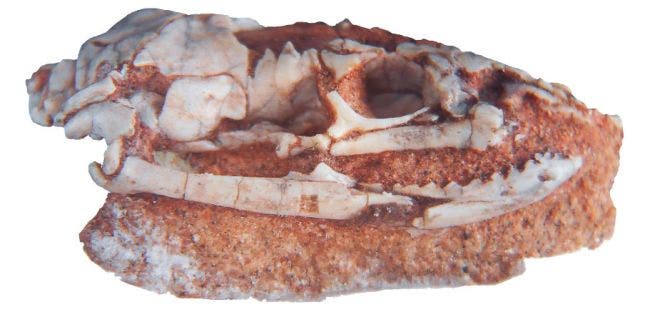Snakes have been around for at least 170 million years, since the upper Middle Jurassic Period, but scientists know surprisingly little about their evolution due to a sparse fossil record. What’s certain is that they once had hind legs and only later became limbless. A new study suggests that this transition took place over a much larger period of time than previously thought.

An international team of researchers recently described an ancient snake with hind limbs, known as Najash rionegrina (in the bible, Nahash is a legged snake, which is Hebrew for snake).
The first description of Najash, which was first discovered 13 years ago, was based on a fragmented skull. This led to a lot of guesswork concerning the primitive snake’s appearance. What was clear even from this incomplete specimen is that Najash had robust hindlimbs and unlike other such ancient snakes, it crawled through the desert rather than swam through the ocean. In this sense, Najash is unique because of its terrestrial habitat.
In their new study, researchers led by Fernando Garberoglio from the University of Buenos Aires analyzed eight skulls, one of which was almost perfectly intact, found in northern Patagonia in Argentina. What makes the fossils particularly important is the fact that they’ve been preserved in three-dimensions, uncrushed, whereas most fossils are flattened like a pancake. As such, these fossils allowed the researchers to answer some longstanding questions about how snakes evolved their highly specialized skulls.

Micro-computer tomography scans revealed that Najash had a combination of lizard and modern snake features. It had a lizard-like cheekbone but lacked a bony arch connecting the skull the cheekbone. It also had intermediate features between snakes and lizards, such as a jaw point. According to the researchers, though, Najash had many of the flexible joints present in the skull of modern snakes.
“Snakes are famously legless, but then so are many lizards,” said Dr. Alessandro Palci, co-author of the study and a researcher at Flinders University.
“What truly sets snakes apart is their highly mobile skull, which allows them to swallow large prey items.”
“For a long time we have been lacking detailed information about the transition from the relatively rigid skull of a lizard to the super flexible skull of snakes.”
The 95-million-year-old fossils discovered in the La Buitrera Paleontological Area in Argentina also fill in the blanks in Najash‘s evolutionary tree.
Previously, scientists used to think that snakes trace their origins in blind, burrowing lizards. Scolecophidians, a group of living small, worm-like burrowing snakes, share common features and are considered the most primitive snakes alive today. But the newly described fossils show that skulls in the lineage of ancient snakes had nothing in common with scolecophidian snakes.
The newly constructed snake family tree remarkably shows that the slithering creatures had small hind legs for the first 70 million years of their evolution before limbless, modern snakes appeared.
“These primitive snakes with little legs weren’t just a transient evolutionary stage on the way to something better,” said Professor Mike Lee, a researcher at Flinders University and South Australian Museum.
“Rather, they had a highly successful body plan that persisted across many millions of years, and diversified into a range of terrestrial, burrowing and aquatic niches.”
The findings appeared in the journal Science Advances.









